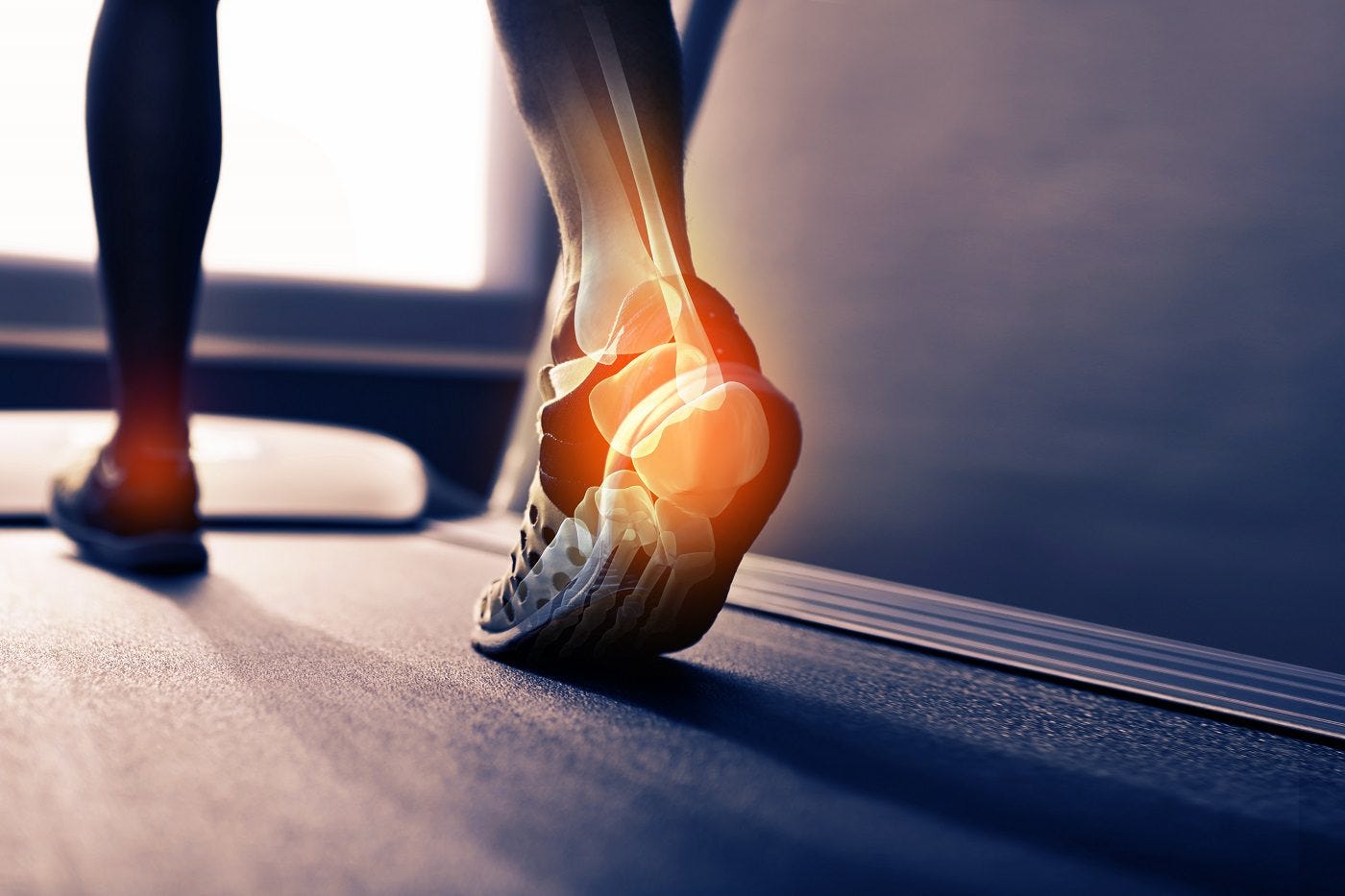What to Do If You Have Plantar Fasciitis
Medically Reviewed by Dr. Nicole Avena
If you’re physically active, you’ve probably had pain in your feet at some point. One common condition that affects many people is plantar fasciitis.
What’s Plantar Fasciitis?
Plantar fasciitis is a common source of heel pain. Your plantar fascia is a band of tissue that connects your toes to your heel bone. It supports the arch of your foot and helps to absorb shock when you walk or run.
Plantar fasciitis is common in runners, overweight individuals, and those who wear shoes with insufficient support.
A common sign of plantar fasciitis is sharp pain when you take the first few steps in the morning. As you move around, the pain typically begins to diminish. However, the pain may return if you stand for extended periods, take a jog, or engage in rigorous physical activities.
Risk Factors
Plantar fasciitis may be caused by the normal wear and tear of using your feet. However, there are other factors that may increase your chances of developing this condition. These include:
- High-impact activities – long-distance running, ballet dancing, and other high-impact activities can place stress on the heel and the connected tissues.
- Excessive weight – carrying extra pounds places additional stress on the feet and may cause foot pain.
- Age-related complications – people ages 40 to 60 are more likely to develop plantar fasciitis.
- Occupational necessity – jobs that require long periods of standing throughout the day may lead to foot pain.
- Walking pattern – people with flat feet, high/low arches, or an unusual gait may place added stress on their heels.
Failing to address the issues related to plantar fasciitis may lead to foot, knee, hip, or back pain.
Diagnosis and Testing

Though testing is rarely required, a doctor may recommend an X-ray or MRI to rule out other issues such as a stress fracture. An X-ray also may reveal a bone spur on the heel bone.
Possible Treatments
Before committing to any treatment plan for heel pain, it’s best to consult your medical doctor to make sure you’re taking the best course of action possible. They may recommend taking over the counter, pain-relieving medications – such as Advil, Motrin, or Aleve. But there are several natural ways to help reduce the symptoms of plantar fasciitis as well.
Physical therapy may be a great place to start. A therapist can help you with specific stretches to strengthen the lower leg muscles, the Achilles tendon, and the plantar fascia. They also might indicate if athletic tape is needed to help relieve pain, and if so, where to place it on your foot.
A therapist may recommend the use of a night splint to stretch your calf and arch while you sleep. Another recommendation may involve orthotics, which can include customized arch supports for your shoes.
More extreme measures may include steroid medication injections and platelet-rich plasma injections. Shock wave therapy and the ultrasonic tissue repair technique also may help relieve plantar fasciitis pain. Surgery, to detach the plantar fascia from the heel bone, may be the only option to relieve severe heel pain for some.
Daily Maintenance
Here are some easy and effective ways to reduce the impact of plantar fasciitis in your daily routines:
–Wear supportive shoes with thick soles, ample cushioning, and firm arch supports. Never wear worn-out shoes as they may cause/intensify foot pain.
–Consider switching to a low impact sport, like swimming instead of jogging.
–Apply a covered ice pack for 15 minutes to reduce foot or heel swelling/pain.
–Try some of these stretches that can help relieve pain and tightness in your Achilles tendon, plantar fascia, and calf muscles.
–Maintain a healthy weight. Not only can this promote physical and mental wellness, it also may help reduce the strain you put on your feet.
Heal Your Heels
If you think you may have plantar fasciitis, it’s a good idea to make an appointment with a physical therapist or podiatrist. A healthcare practitioner should be able to arrive at an accurate diagnosis based on your specific pain or symptoms, as well as recommended ways to treat the problem.
Most people use their feet for a variety of activities every day, including work, exercise, running errands, and leisure activities. There are many ways to relieve foot pain and some of them are natural and inexpensive.
Applying the above tips may help reduce foot pain so you can get back to doing the things you enjoy.
At BrainMD, we’re dedicated to providing the highest purity nutrients to improve your physical health and overall well-being. For more information about our full list of brain healthy supplements, please visit us at BrainMD.


